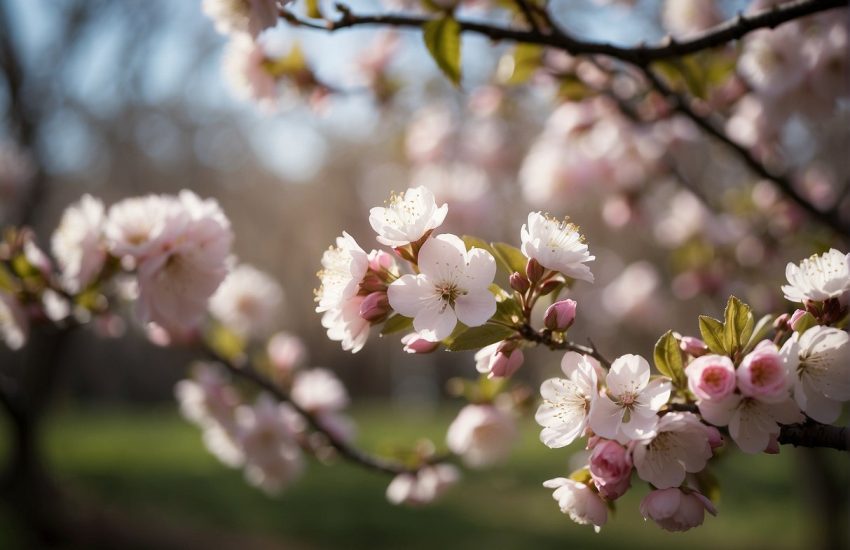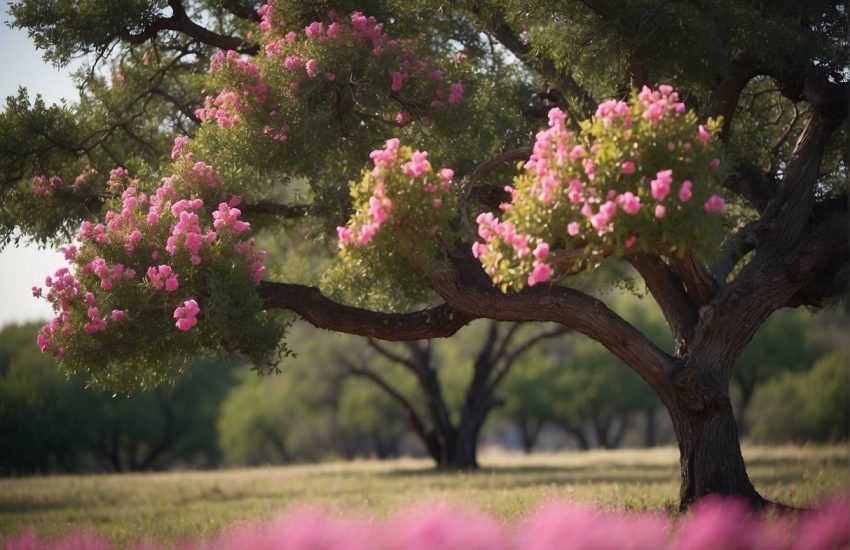Purple Flowering Tree Maryland: Best Options for Your Garden
Maryland is home to a variety of beautiful trees, including those that bloom with vibrant purple flowers. These trees not only add to the beauty of a garden or landscape, but also provide numerous benefits to the environment. Gardeners in Maryland can choose from a range of purple flowering trees that are well-suited to the state’s climate and soil conditions.

One of the most popular purple flowering trees in Maryland is the Jane magnolia. This tree is known for its large, tulip-shaped flowers that bloom in shades of pink and purple. It can be grown virtually anywhere in the state, making it a great choice for gardeners looking to add a splash of color to their landscape. Another popular option is the black locust tree, which has a wonderful fragrance and produces beautiful purple flowers. This fast-growing tree is also drought-tolerant, making it a great choice for Maryland’s climate.
In addition to their beauty, purple flowering trees provide numerous benefits to the environment. They attract pollinators such as bees and butterflies, which play a crucial role in the health of ecosystems. They also help to purify the air and provide shade, reducing the need for air conditioning in the summer months. With so many benefits, it’s no wonder that purple flowering trees are a popular choice for gardeners in Maryland.
Popular Purple Flowering Trees in Maryland

Maryland is home to a variety of beautiful purple flowering trees that add color and interest to any garden or landscape. Here are some of the most popular purple flowering trees in Maryland:
Eastern Redbud
The Eastern Redbud (Cercis canadensis) is a deciduous tree that produces heart-shaped leaves and clusters of pink flowers in the spring. It is a popular ornamental tree that is well-suited for gardens and landscapes. The Eastern Redbud is fast-growing and drought-tolerant, making it a great choice for those looking for a low-maintenance tree.
Jane Magnolia
The Jane Magnolia (Magnolia x ‘Jane’) is a deciduous tree that produces fragrant, reddish-purple tulip-shaped blooms in late spring. This tree is perfect for small yards and gardens, as it has a compact size and dense foliage. The Jane Magnolia is a versatile and hardy plant that can be used as a small tree or a large hedge.
Purple Robe Locust
The Purple Robe Locust (Robinia pseudoacacia ‘Purple Robe’) is a deciduous tree that produces clusters of fragrant, deep purple flowers in the late spring and early summer. This tree is fast-growing and drought-tolerant, making it a great choice for those looking for a low-maintenance tree. The Purple Robe Locust is also known for its dense foliage, which provides excellent shade during the summer months.
Crape Myrtle
The Crape Myrtle (Lagerstroemia indica) is a deciduous tree that produces clusters of bright purple flowers in the summer. This tree is well-suited for full sun and is drought-tolerant, making it a great choice for those looking for a low-maintenance tree. The Crape Myrtle is also known for its beautiful bark, which peels away to reveal a smooth, cinnamon-colored trunk.
Overall, these popular purple flowering trees in Maryland are a great addition to any garden or landscape. They provide beautiful color and interest throughout the year and are well-suited for a variety of growing conditions.
Care and Maintenance for Healthy Growth

Soil and Watering Requirements
Purple flowering trees in Maryland are hardy and adaptable to a range of soil types. However, they prefer well-drained soil that is moist but not waterlogged. These trees grow best in acidic soil with a pH between 5.0 and 6.5. Regular watering is essential for the healthy growth of purple flowering trees, especially during drought periods.
Sunlight and Shade Preferences
Most purple flowering trees in Maryland prefer full sun to partial shade. However, some varieties can tolerate dappled shade. It is essential to plant these trees in a location that receives adequate sunlight for at least six hours a day.
Pruning and Protection
Pruning is essential for the healthy growth of purple flowering trees in Maryland. It is recommended to prune these trees in late winter or early spring before new growth appears. This will help to remove any damaged or diseased branches and promote healthy growth. Additionally, protection from frost and deer is necessary to ensure the longevity of these trees.
Overall, purple flowering trees in Maryland are hardy and adaptable to a range of growing conditions. By providing the appropriate soil and water requirements, adequate sunlight, and regular pruning, these trees will thrive in any landscape.


